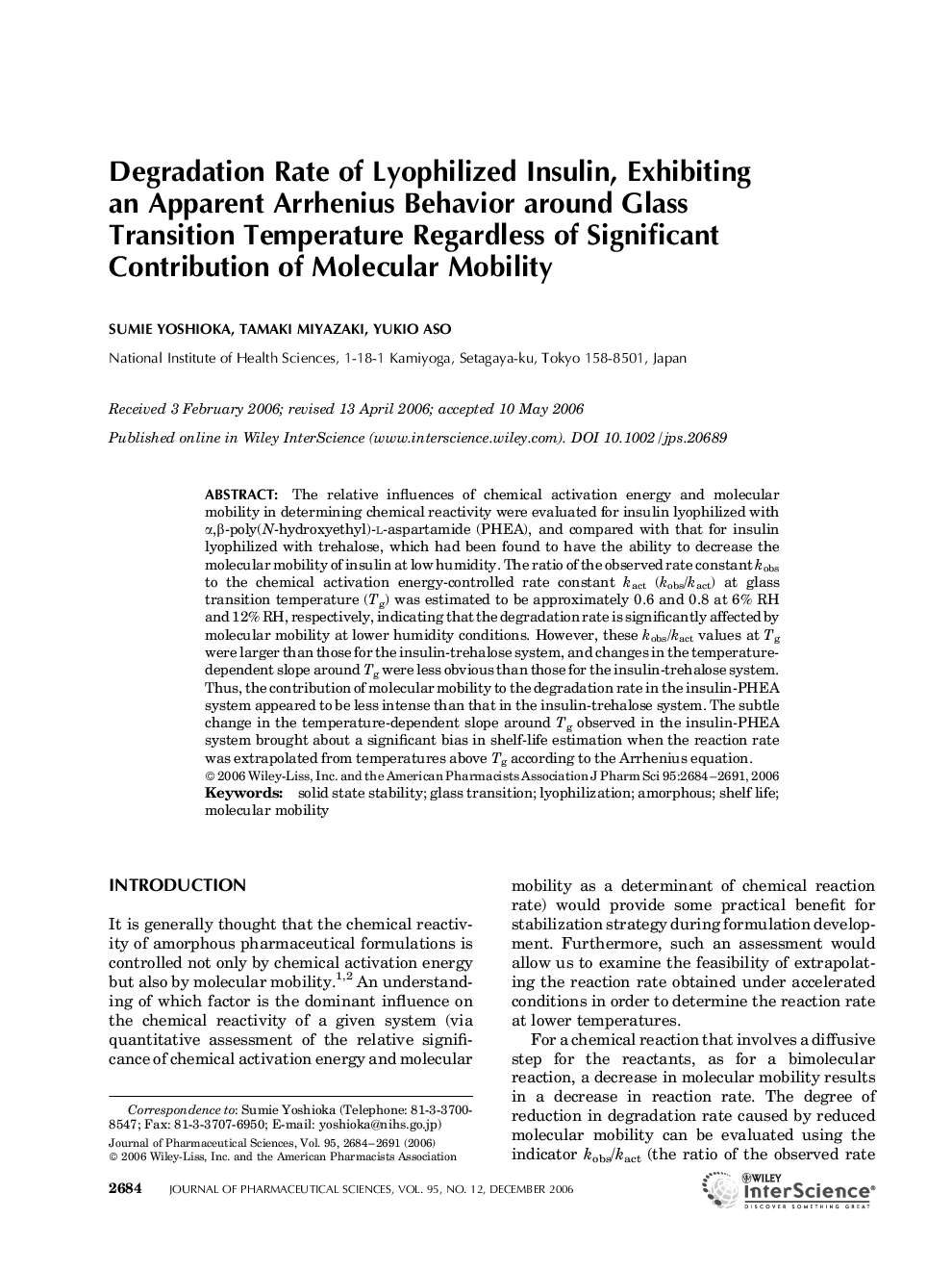| Article ID | Journal | Published Year | Pages | File Type |
|---|---|---|---|---|
| 2487909 | Journal of Pharmaceutical Sciences | 2006 | 8 Pages |
Abstract
The relative influences of chemical activation energy and molecular mobility in determining chemical reactivity were evaluated for insulin lyophilized with α,β-poly(N-hydroxyethyl)-L-aspartamide (PHEA), and compared with that for insulin lyophilized with trehalose, which had been found to have the ability to decrease the molecular mobility of insulin at low humidity. The ratio of the observed rate constant kobs to the chemical activation energy-controlled rate constant kact (kobs/kact) at glass transition temperature (Tg) was estimated to be approximately 0.6 and 0.8 at 6% RH and 12% RH, respectively, indicating that the degradation rate is significantly affected by molecular mobility at lower humidity conditions. However, these kobs/kact values at Tg were larger than those for the insulin-trehalose system, and changes in the temperature-dependent slope around Tg were less obvious than those for the insulin-trehalose system. Thus, the contribution of molecular mobility to the degradation rate in the insulin-PHEA system appeared to be less intense than that in the insulin-trehalose system. The subtle change in the temperature-dependent slope around Tg observed in the insulin-PHEA system brought about a significant bias in shelf-life estimation when the reaction rate was extrapolated from temperatures above Tg according to the Arrhenius equation.
Related Topics
Health Sciences
Pharmacology, Toxicology and Pharmaceutical Science
Drug Discovery
Authors
Sumie Yoshioka, Tamaki Miyazaki, Yukio Aso,
